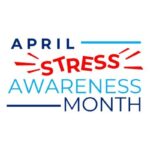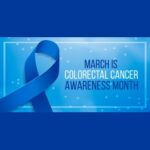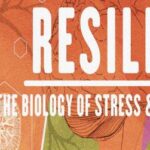LSD
Brief Description
 LSD (d-lysergic acid diethylamide) is one of the most potent mood-changing chemicals. It was discovered in 1938 and is manufactured from lysergic acid, which is found in ergot, a fungus that grows on rye and other grains. LSD can distort perceptions of reality and produce hallucinations; the effects can be frightening and cause panic. It is sold as tablets, capsules, liquid, or on absorbent paper.
LSD (d-lysergic acid diethylamide) is one of the most potent mood-changing chemicals. It was discovered in 1938 and is manufactured from lysergic acid, which is found in ergot, a fungus that grows on rye and other grains. LSD can distort perceptions of reality and produce hallucinations; the effects can be frightening and cause panic. It is sold as tablets, capsules, liquid, or on absorbent paper.
LSD users can also experience flashbacks, or recurrences of certain aspects of the drug experience. Flashbacks occur suddenly, often without warning, and may do so within a few days or more than a year after LSD use. In some individuals, the flashbacks can persist and cause significant distress or impairment in social or occupational functioning, a condition known as hallucinogen-induced persisting perceptual disorder (HPPD).
Most users of LSD voluntarily decrease or stop its use over time. LSD is not considered an addictive drug since it does not produce compulsive drug-seeking behavior. However, LSD does produce tolerance, so some users who take the drug repeatedly must take progressively higher doses to achieve the state of intoxication that they had previously achieved. This is an extremely dangerous practice, given the unpredictability of the drug. In addition, cross-tolerance between LSD and other hallucinogens has been reported.

Effects
 The effects of LSD depend largely on the amount taken. LSD causes dilated pupils; can raise body temperature and increase heart rate and blood pressure; and can cause profuse sweating, loss of appetite, sleeplessness, dry mouth, and tremors. LSD, peyote, psilocybin, and PCP are drugs that cause hallucinations, which are profound distortions in a person’s perception of reality. Under the influence of hallucinogens, people see images, hear sounds, and feel sensations that seem real but are not. Some hallucinogens also produce rapid, intense emotional swings.
The effects of LSD depend largely on the amount taken. LSD causes dilated pupils; can raise body temperature and increase heart rate and blood pressure; and can cause profuse sweating, loss of appetite, sleeplessness, dry mouth, and tremors. LSD, peyote, psilocybin, and PCP are drugs that cause hallucinations, which are profound distortions in a person’s perception of reality. Under the influence of hallucinogens, people see images, hear sounds, and feel sensations that seem real but are not. Some hallucinogens also produce rapid, intense emotional swings.
Health Concerns
LSD users quickly develop a high degree of tolerance for the drug’s effects: After repeated use, they need increasingly larger doses to produce similar effects. LSD use also produces tolerance for other hallucinogenic drugs such as psilocybin and mescaline, but not to drugs such as marijuana, amphetamines, and PCP, which do not act directly on the serotonin receptors affected by LSD.
Tolerance for LSD is short-lived it is lost if the user stops taking the drug for several days. There is no evidence that LSD produces physical withdrawal symptoms when chronic use is stopped.
Two long-term effects persistent psychosis and hallucinogen persisting perception disorder (HPPD), more commonly referred to as “flashbacks,” have been associated with use of LSD. The causes of these effects, which in some users occur after a single experience with the drug, are not known.
The effects of LSD can be described as drug-induced psychosis-distortion or disorganization of a person’s capacity to recognize reality, think rationally, or communicate with others. Some LSD users experience devastating psychological effects that persist after the trip has ended, producing a long-lasting psychotic-like state. LSD-induced persistent psychosis may include dramatic mood swings from mania to profound depression, vivid visual disturbances, and hallucinations. These effects may last for years and can affect people who have no history or other symptoms of psychological disorder.
Some former LSD users report experiences known colloquially as “flashbacks” and called “HPPD” by physicians. These episodes are spontaneous, repeated, sometimes continuous recurrences of some of the sensory distortions originally produced by LSD.
The experience may include hallucinations, but it most commonly consists of visual disturbances such as seeing false motion on the edges of the field of vision, bright or colored flashes, and halos or trails attached to moving objects. This condition is typically persistent and in some cases remains unchanged for years after individuals have stopped using the drug.
Source: NIDA (National Institute on Drug Abuse)










